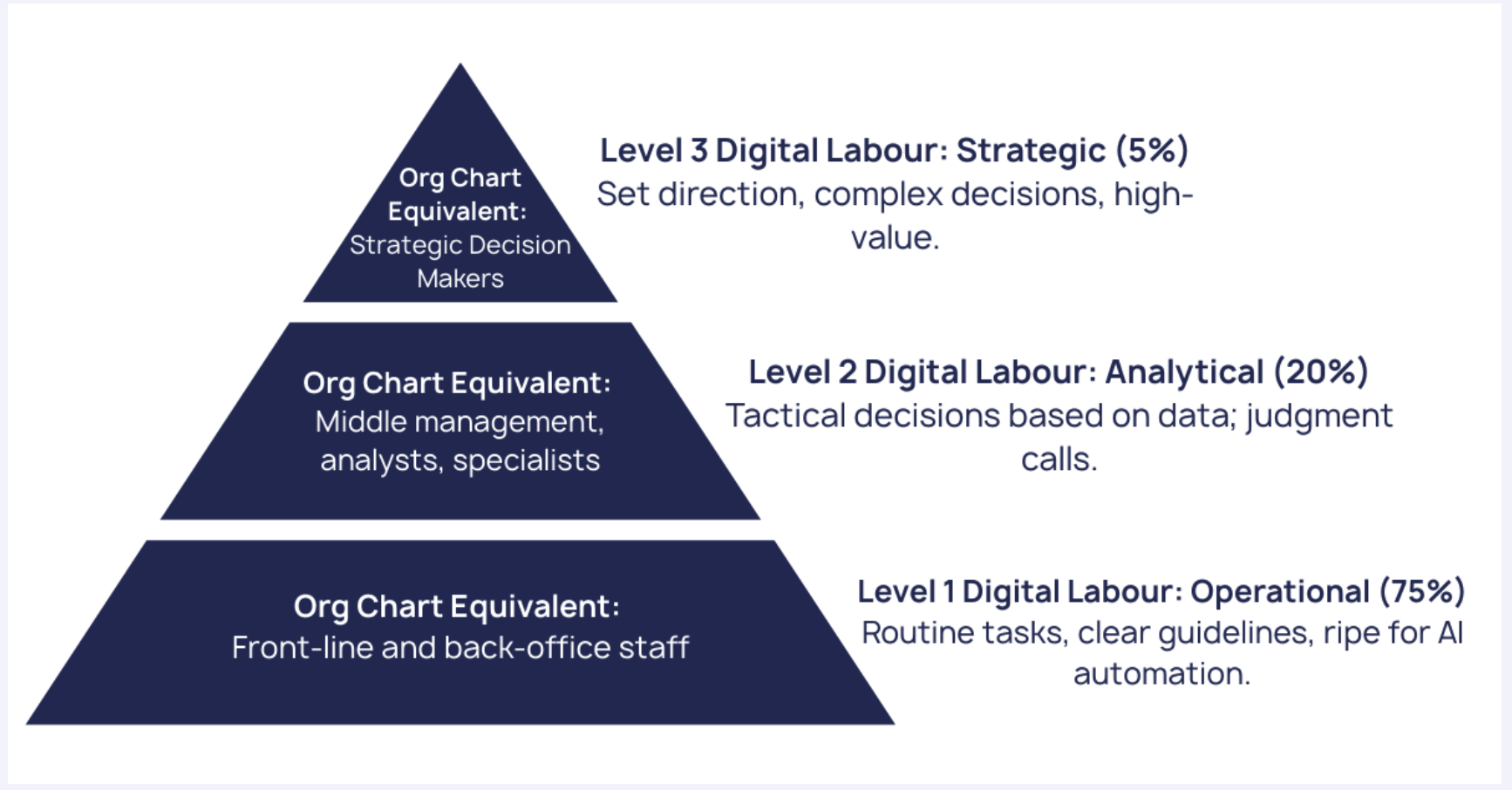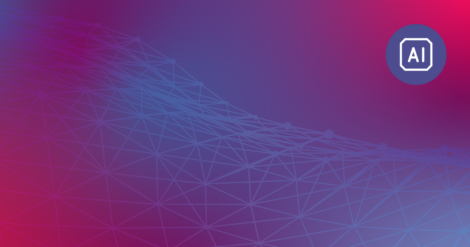The world is betting big on artificial intelligence. By the end of 2025 alone, $400bn will be invested (Economist) in infrastructure required to run AI models. By the end of 2028, this number is expected to climb to $3trn.
Despite these eye-watering sums, value from AI remains stubbornly elusive. 74% of enterprise companies struggle to implement AI (BCG), while only 25% have moved beyond the proof of concept (POC) stage for AI initiatives.
So, what can enterprises do to successfully operationalize agentic AI? In this joint post with our partners at causaLens, we’ll provide a framework that breaks down what it takes to get AI initiatives from pilot to production.
In our experience, the AI models themselves are not the issue. Modernizing enterprise architectures, building trust and support for AI, and implementing AI in a way that generates impact: these are organizational and architectural challenges.
Two pillars are pivotal in addressing these challenges:
- AI maturity and organizational readiness
- Trust in AI initiatives, and the data that powers them
Let’s explore both of these individually, and provide some real-world examples of enterprises who have transformed their operations with AI.
Maturity to Meet the Challenge
As organizations adopt AI, a new form of work is emerging that can be thought of as digital labor, referring to tasks carried out by systems rather than people. Like human work, this digital labor spans different levels of complexity. At Level 1 it handles routine operational tasks with clear rules, making it a natural entry point for automation. At Level 2 it supports analytical work, helping with data-driven judgment calls and tactical decisions. At Level 3 it rises to the strategic level, contributing to high-value decisions and executive-level endeavors that shape the direction of the business.
The complexity of an AI system should match the complexity of the business need. Today, many organizations devote significant human effort to Level 1 operational use cases that mostly involve moving routine tasks forward. These areas are highly suitable for automation, and we expect Level 1 adoption to become widespread across industries.
As Level 1 use cases become increasingly commonplace, the focus will shift toward Levels 2 and 3, where AI supports analytical and strategic processes. These stages are more difficult to achieve, but they also deliver the greatest competitive advantage for organizations that succeed.
Regardless of the level, AI depends on accurate, up-to-date data. That is where MCP-ready architectures come in. With governed, real-time data, it becomes possible to automate operational tasks, free up humans for deeper thinking, and even design digital workers capable of taking on more analytical and specialized responsibilities.
| Learn more about MCP in our ebook: What is MCP and What Does It Mean for Modern Data Architectures | Download |
By equipping agents with trusted, real-time context, enterprises can go beyond operational efficiency. They can unlock analytical insights and strategic guidance, creating systems that actively support better decisions and build lasting competitive advantage.
Trust as the Non-Negotiable
In order for level 2 and level 3 AI initiatives to succeed, you need to ensure there’s a high degree of trust in the reliability of the digital workers. One pioneering technique for achieving this is agentic causal reasoning, which fine tunes models to ground them in a structural world model, helping them improve performance on tasks that require analysis of the real world.
What is causal reasoning?
Causal reasoning is the process of understanding and modeling cause-and-effect relationships rather than relying solely on correlations.
Using structural causal models, AI can simulate interventions and counterfactuals, testing how changes to one factor would influence outcomes, leading to more accurate, generalizable, and trustworthy predictions.
Ultimately, causal reasoning allows AI to move beyond pattern recognition toward true causal understanding, making its outputs more reliable, actionable, and aligned with real-world dynamics.
casuaLens provides casual reasoning as standard practice when it comes to deploying their agents, learn more via their website.
Additionally, building a comprehensive System of Work enables companies to coordinate and inspect the work of multiple workers, handling scheduling, routing, and role delegation. It enhances observability including success/failure rates, incident tracking, and realized financial returns.
For example, the System of Work allows oversight into exactly how many workers are active at any given time, what they’re working on, whether they’ve run into any errors along the way, and how much this particular run has cost. causaLens has developed a System of Work as a standard protocol: enabling organizations to have greater control and oversight of the agents they deploy.
Agentic digital workers are hungry for data, and getting them the right data at the right time is crucial for successful outcomes. For enterprise AI to be both reliable and useful, they need accurate data: data that is correct, free of duplication or drift, and compliant (by masking, encrypting, or excluding sensitive data, especially PII or PHI). Ideally, data is fed to agentic systems via replicas and staging layers to avoid degrading or overwhelming production systems.
To build trust in AI initiatives, enterprise leaders need solutions that combine agentic frameworks that are reliable and grounded with data access patterns that include masking, protection, and in-flight de-risking, so it lands in its destination in a clean, AI-ready format. Only with both these components can digital workers meet the needs of modern enterprises.
Agentic AI in Action
Here are a few examples of organizations that have managed to deploy reliable, trustworthy digital agents that combine trustworthiness and timely, accurate data for real world success.
How UPS protects packages
UPS embraced agentic AI to optimize one of the world’s most complex logistics networks. By unifying real-time fleet, package, and customer data, UPS empowers its AI assistant to recommend optimal routes, anticipate bottlenecks, and cut operational waste. The result is faster deliveries, lower fuel consumption, and significant cost savings at scale. This shift drives efficiency while strengthening trust in UPS’s ability to deliver reliably for its customers.
How a leading clinical research firm accelerates innovation
One of the world’s leading global clinical research organizations relies on agentic AI to accelerate drug development and trial management. By streaming operational and clinical data into Databricks, they enable AI systems to run simulations, forecast trial outcomes, and spot risks earlier in the process. This has shortened study timelines while ensuring compliance with strict regulatory frameworks. The outcome is a more agile, data-driven R&D operation that improves patient outcomes and speeds life-saving treatments to market.
How Cisco navigates supply chain complexity
Cisco has reimagined supply chain forecasting with AI agents that can think and act like seasoned analysts. By embedding causal reasoning into agentic workflows, Cisco’s data science team is scaling demand forecasting across 10,000+ products, 10 business units, and a multi-billion-dollar global supply chain. These agents can analyze, explain, and deliver forecasts with business-ready narratives that build trust across technical and non-technical stakeholders. The result is faster model development, broader insight coverage, and a more resilient forecasting process that helps Cisco navigate global complexity with confidence.
Ready to Operationalize Agentic AI?
Leading enterprises are proving that agentic AI can scale when it’s built on real-time, trusted data and causal reasoning. Striim and causaLens together provide the foundation and intelligence to make this possible: Striim streams, transforms, and governs enterprise data in real time, while causaLens agents apply proven AI workers to deliver safe, explainable outcomes.
If you’re ready to move beyond pilots and put agentic AI to work in your business, connect with us and causaLens to learn more.




